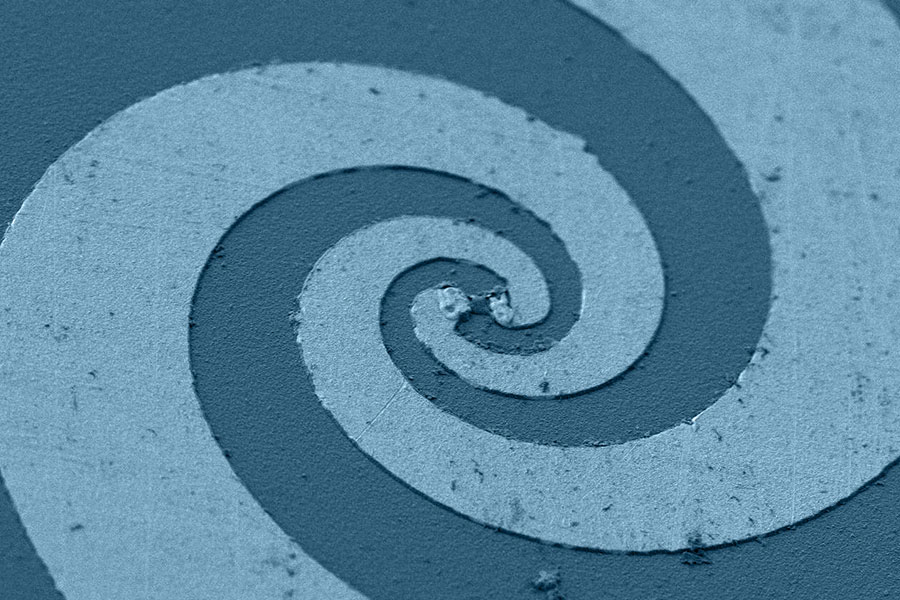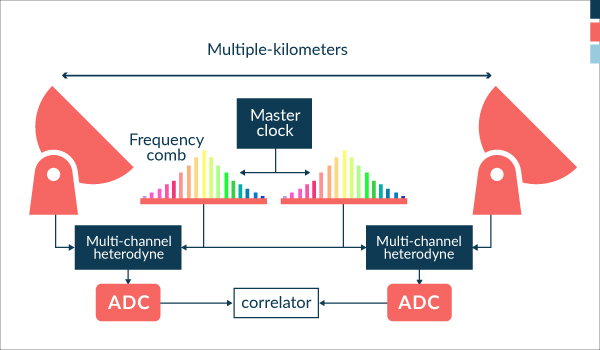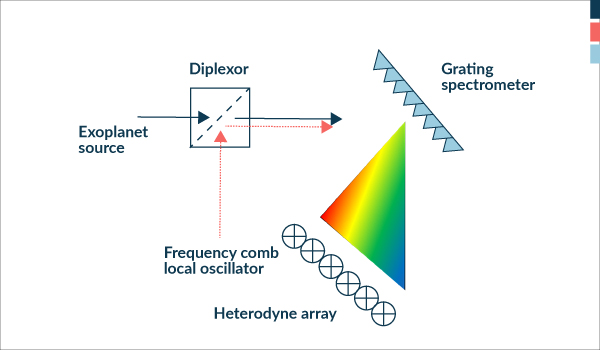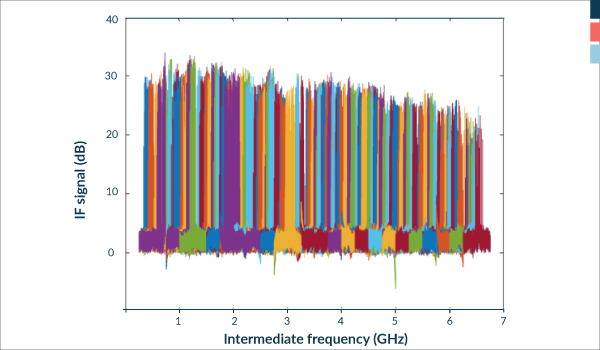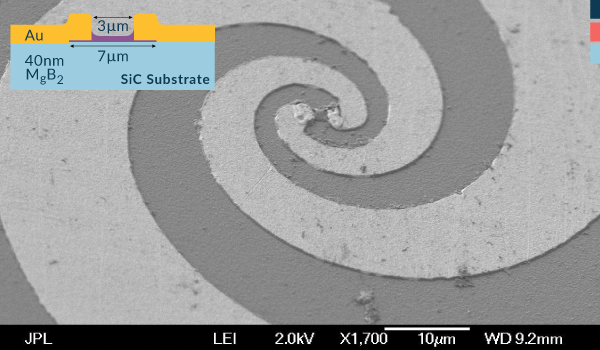Above:
Mixing response of an MgB2 hot-electron bolometer to two 10-µm monochromatic QCL sources.
THz + Mid-IR
THz with Mid-IR to See Worlds Round Distant Stars
Boris Karasik - Daniel Cunnane - Ryan Briggs - Gautam Vasisht
Future large ground based and space mid-IR (λ ~ 10 µm) interferometers can enable direct imaging of protoplanets and even habitable exoplanets that mostly emit in this spectral range. One of the promising ways to carry out line spectroscopy of life tracing gases in atmospheres is to combine a heterodyne spectroscopy with a grating spectroscopy (top panel). In this technique, two quantum cascade laser (QCL) local oscillators (LO) are used at two telescopes coupled interferometrically. The LOs are locked in order to trace the phase difference in arriving signal and thus provide an angle resolution of nanoradian level sufficient for imaging of a planet. Each LO generates a comb of frequencies precisely separated by 10 GHz. The combs are dispersed by a grating and each comb pumps its own heterodyne detector. Using about 100 detectors in each interferometer arm, a complete spectral coverage around ~ 10 µm wavelength can be obtained with a resolution of ~ 3000.
In order to realize this technique, a broadband heterodyne detector with an intermediated frequency (IF) bandwidth of ≥ 5 GHz is required. Conventional mid-IR detectors (HgCdTe photo-diodes) have a much narrower bandwidth. We have demonstrated that the recently developed THz (λ ~ 100 µm) heterodyne detector based on superconducting MgB2 hot-electron bolometer can be a solution for this problem (bottom left panel). This detector has been known to demonstrate an IF bandwidth ≈ 7 GHz. It turned out that the detector works at λ ≈ 10 µm as well because of the bolometric natured of the frequency conversion mechanism in the device. Using two 10-µm monochromatic tunable QCL sources, a proof-of-concept IF bandwidth demonstration has been made (bottom right panel) showing the IF bandwidth ≈ 6 GHz which is sufficient for the spectroscopy using an interferometer.
Both the detector and QCL sources were developed and fabricated at MDL. The found synergy in using the same detector material for applications in two very different spectral ranges is important for reduction of the costs of future developments efforts. The 100-µm heterodyne detectors are currently pursued for application in THz heterodyne arrays for high-resolution spectroscopy of molecular species in interstellar molecular clouds. The novel 10-µm detector will be developed under a new NASA program where its quantum efficiency will be tuned at the wavelength of interest and a standing alone spectral module will be demonstrated.
Each arm of an interferometer has a multi-channel heterodyne receiver for carrying out spectroscopy. The corresponding local oscillator is locked for phase control between the wavefronts at each telescope.
+ Larger image
Grating spectrometer separates local oscillator’s combs into separate beams each of which pumps a separate mixer thus providing a complete coverage of a desired spectral interval.
+ Larger image
Mixing response of an MgB
2 hot-electron bolometer to two 10-µm monochromatic QCL sources.
+ Larger image
This image shows a THz MgB
2 HEB mixer device (in the center) integrated with a planar spiral microantenna.
+ Larger image
